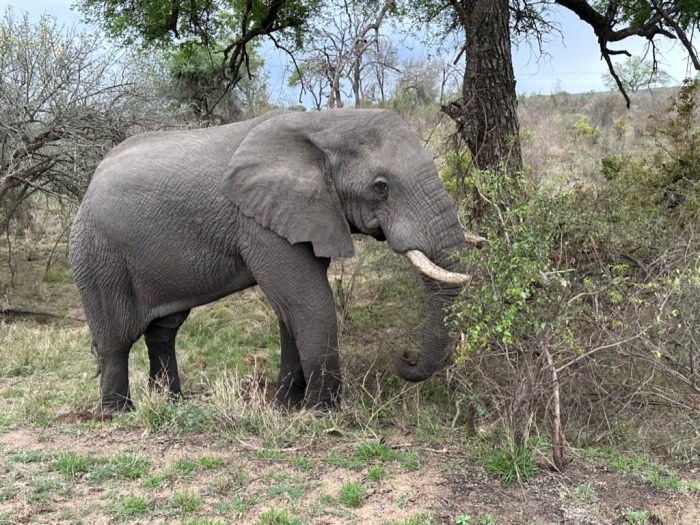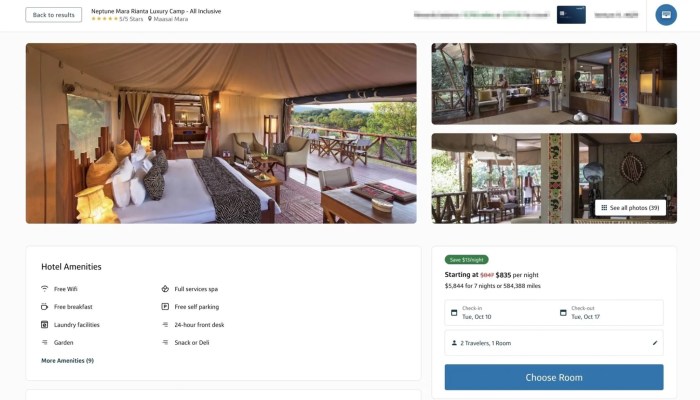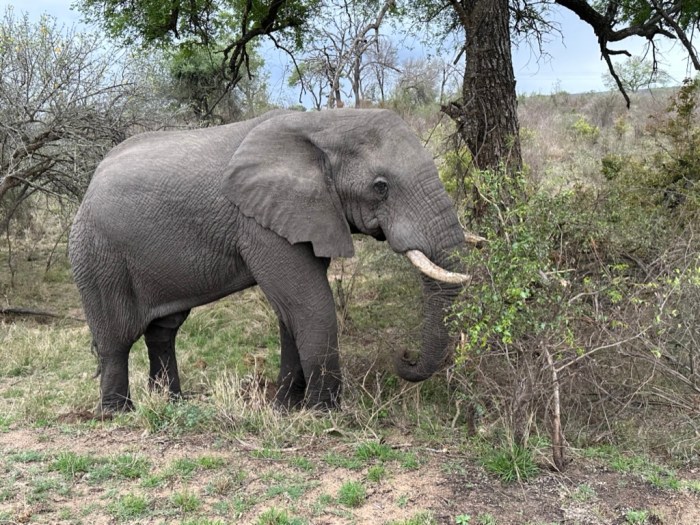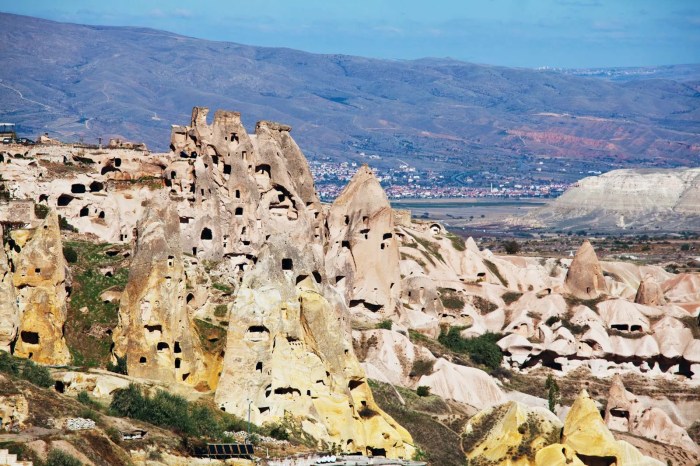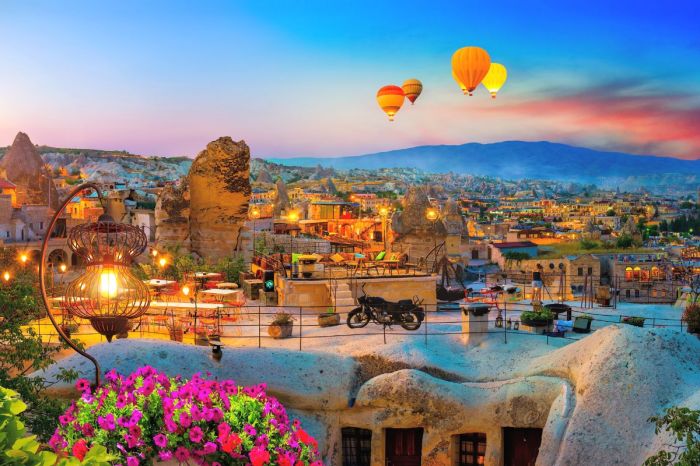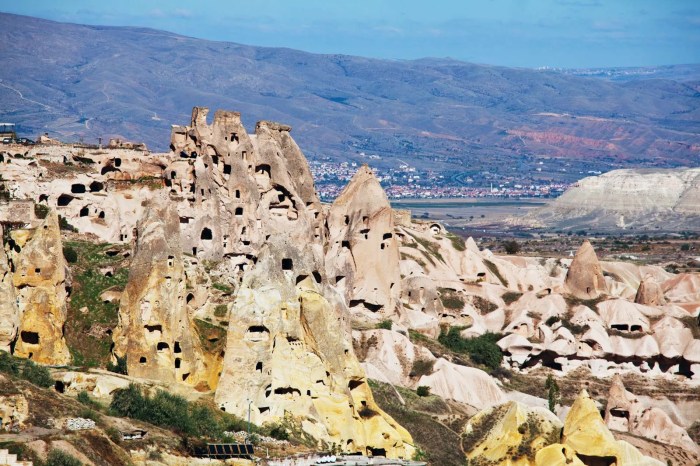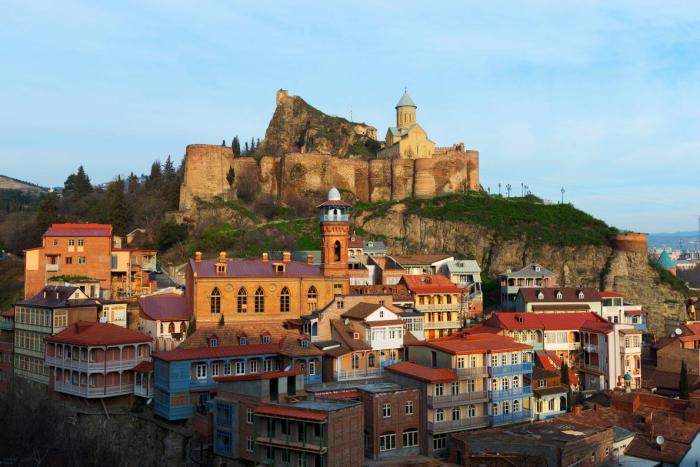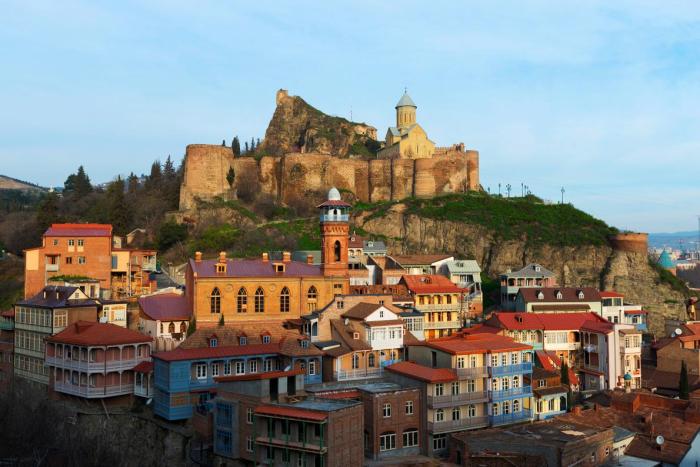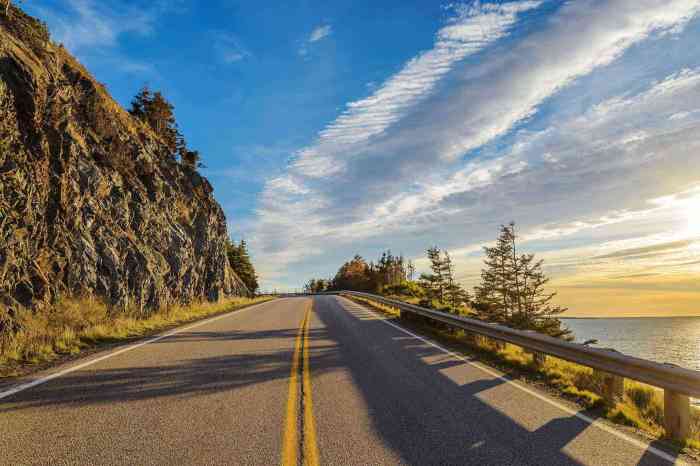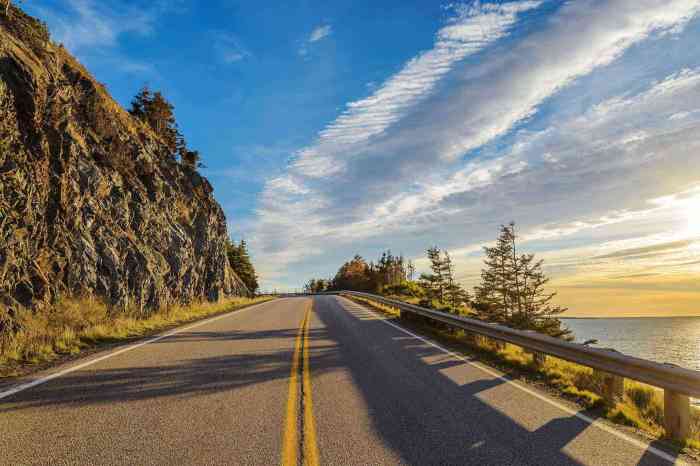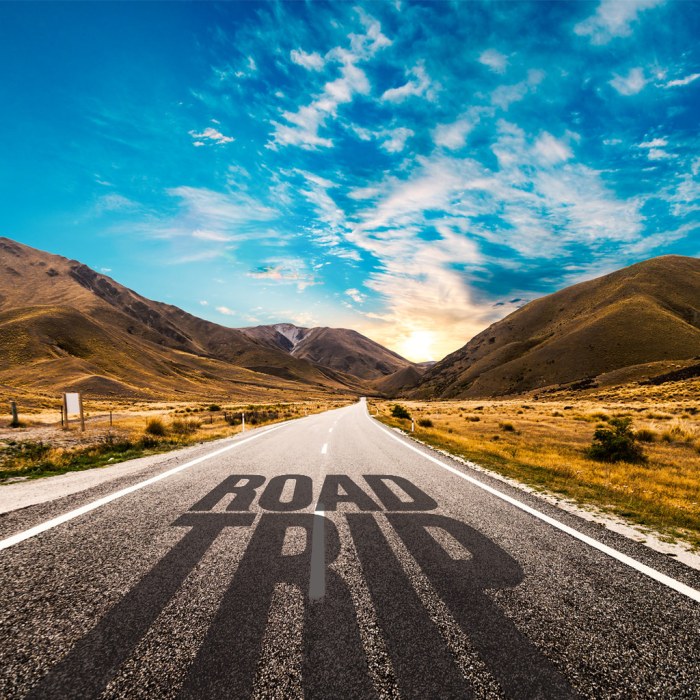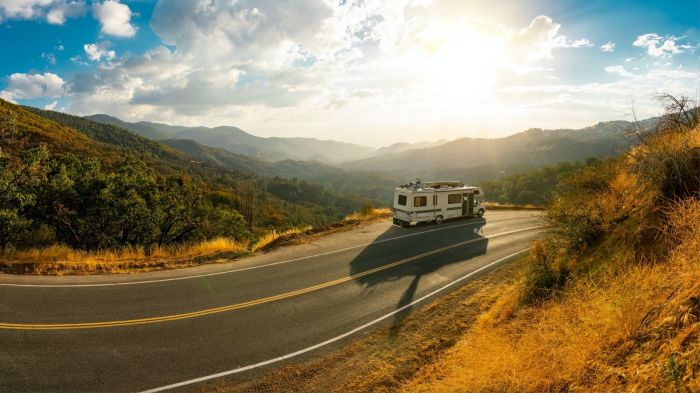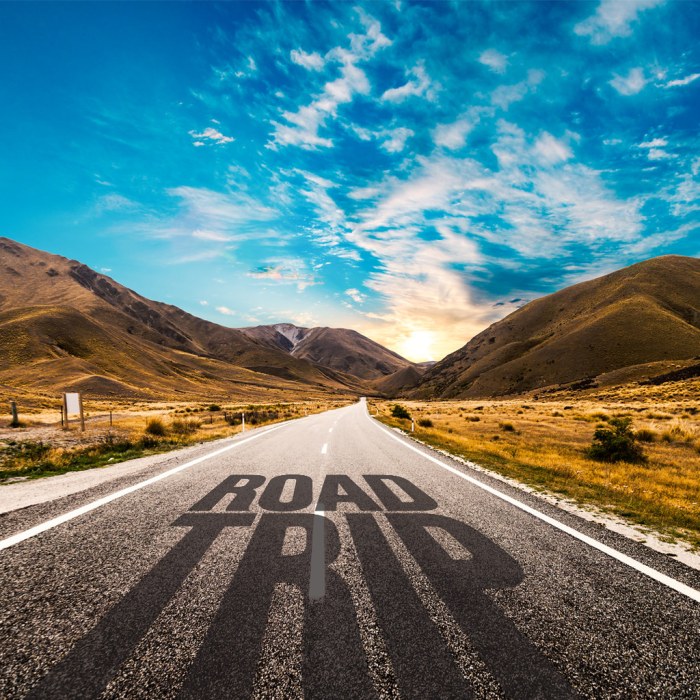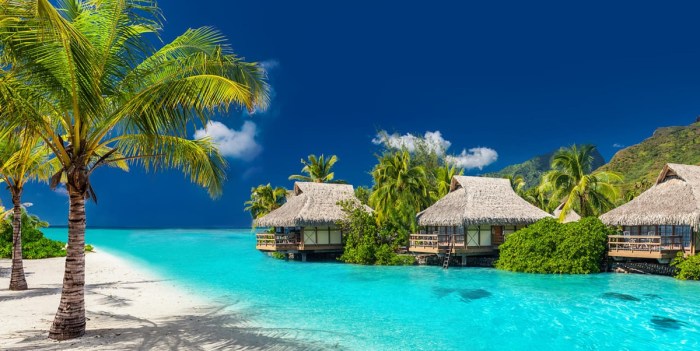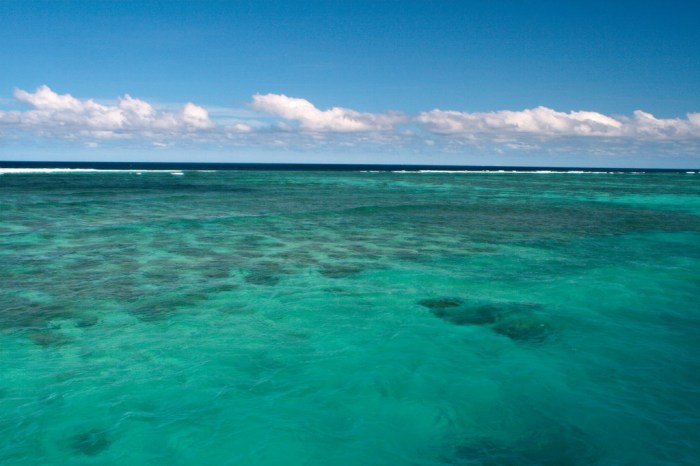Getting around San Francisco can be a whirlwind of options, from bustling public transit to scenic bike paths. This guide dives deep into the best ways to navigate this iconic city, whether you’re a seasoned traveler or a first-time visitor. We’ll explore everything from the Muni system to ride-sharing services, walking tours, and even tips for navigating special events.
Let’s uncover the secrets to effortlessly exploring San Francisco!
From the iconic Golden Gate Bridge to the charming Fisherman’s Wharf, understanding how to get around is key to maximizing your San Francisco experience. This comprehensive guide will equip you with the knowledge and resources to choose the perfect mode of transport for every adventure. We’ll cover the practicalities of each option – cost, speed, convenience – and offer insightful comparisons to help you make informed decisions.
Transportation Methods in San Francisco
San Francisco, a city known for its iconic hills and stunning views, presents a unique set of challenges and opportunities for navigating its urban landscape. Understanding the various transportation options available is crucial for efficient and enjoyable travel. This exploration delves into the diverse methods of getting around, weighing their pros and cons, and offering insights into their practical application.
Common Transportation Methods
San Francisco offers a diverse range of transportation methods, each with its own strengths and weaknesses. These methods include public transit, ride-sharing services, and cycling. Understanding the characteristics of each option is essential for selecting the most appropriate method for a given journey.
- Public Transit: San Francisco’s public transit system, primarily consisting of buses and Muni Metro, offers a cost-effective and environmentally friendly way to traverse the city. The system’s extensive network covers a wide range of neighborhoods, connecting residents and tourists alike. However, the system can be susceptible to delays, especially during peak hours. Furthermore, navigating the extensive network can be challenging for newcomers.
- Ride-Sharing Services: Services like Uber and Lyft provide convenient and readily available transportation. The ability to hail a ride on demand eliminates the need to wait for scheduled routes, making it particularly appealing for short-distance trips or those requiring flexibility. However, the cost can vary significantly depending on demand, and surge pricing can inflate costs during high-traffic periods. Reliability can also be an issue, as drivers’ availability can fluctuate.
Navigating San Francisco’s hilly streets can be a challenge, but once you get the hang of it, it’s a breeze! Thinking about a romantic getaway? For truly unforgettable Italian experiences, check out some of the most romantic places to visit in Italy, like the picturesque villages of Tuscany or the charming canals of Venice. most romantic places to visit in italy Public transport is excellent, though, and a good way to see the city’s highlights, especially if you’re looking for a less physically demanding trip.
Furthermore, traffic congestion can impact travel times.
- Biking: San Francisco’s bike-friendly infrastructure makes cycling a popular option for navigating the city. The extensive network of bike lanes and paths allows for efficient and scenic travel, particularly for shorter distances. Cycling offers a low-cost and eco-friendly mode of transport. However, navigating hills can be challenging, and security concerns, such as theft, can be relevant factors to consider.
Comparison of Transportation Options
A comparative analysis of various transportation options provides a clear understanding of their relative merits. The table below highlights key aspects of each method, allowing for a more informed decision-making process when choosing a mode of transport.
| Transportation Method | Cost | Time | Accessibility | Environmental Impact |
|---|---|---|---|---|
| Public Transit | Generally affordable, fares vary | Can be time-consuming, subject to delays | Wide accessibility, extensive network | Low, contributes to reduced emissions |
| Ride-Sharing Services | Variable, subject to surge pricing | Generally faster during low traffic | Wide accessibility, immediate availability | Moderate, dependent on vehicle efficiency and traffic |
| Biking | Free (excluding equipment costs) | Faster for shorter distances, slower for longer distances | High accessibility for those with bikes | Very low, zero emissions |
Public Transit vs. Ride-Sharing Efficiency
Comparing the efficiency of public transit and ride-sharing for specific journeys is crucial for understanding their practical application. Consider a trip from Fisherman’s Wharf to the Financial District. Public transit, with its dedicated Muni Metro lines, would likely provide a faster journey, especially during peak hours. However, ride-sharing could offer greater flexibility for alternative routes if public transit is experiencing significant delays.
In summary, the optimal choice depends on the specific context of the journey.
Walking and Biking

San Francisco’s unique topography and vibrant culture make walking and biking essential modes of transportation. The city’s hills, iconic landmarks, and diverse neighborhoods are best explored on foot or two wheels. Whether you’re a seasoned cyclist or a casual walker, these methods offer a captivating and active way to experience the city’s charm.Navigating San Francisco by foot or bike allows for a deeper appreciation of the city’s character.
You’ll encounter hidden gems, local shops, and captivating street art that often get missed while traveling by car or public transport. This close-up perspective adds a layer of personal connection to the city’s atmosphere.
Bike-Friendly Infrastructure
San Francisco boasts an extensive network of bike lanes and paths, significantly contributing to its bike-friendly reputation. Dedicated bike lanes are common on major streets and often integrate seamlessly into the overall road infrastructure. This well-developed infrastructure makes cycling a safe and convenient option for commuters and tourists alike. Protected bike lanes, separated from car traffic, further enhance safety and encourage wider use.
Popular Walking and Biking Routes
San Francisco offers a multitude of scenic walking and biking routes. These routes cater to various interests, from breathtaking views to cultural immersion. Many routes combine sightseeing with opportunities for exploration.
- Golden Gate Bridge Bike Ride: A classic San Francisco experience. The Golden Gate Bridge bike path offers spectacular views of the bridge, Alcatraz, and the San Francisco skyline. The route is relatively flat, making it suitable for all levels of cyclists. This route is ideal for a full day trip, with numerous photo stops and scenic viewpoints along the way.
Navigating San Francisco can be a bit of a challenge, with hills and quirky routes. But if you’re looking for something truly unique and culturally enriching, I’d recommend checking out the amazing opportunities in Ghana. There are so many fascinating things to see and do there, like exploring bustling markets and visiting ancient forts, as detailed in this awesome list of top things to do in Ghana.
Once you’ve explored the vibrant culture, you can easily hop on a bus or cable car to continue your San Francisco adventure!
- Presidio Promenade: This paved path offers stunning views of the Golden Gate Bridge, the bay, and the city. The Presidio National Park offers diverse walking paths, suitable for various preferences and fitness levels. It’s a perfect spot for a leisurely walk, enjoying the nature and the panoramic vistas.
- Haight-Ashbury Exploration: This neighborhood is a hub for street art, independent shops, and unique cafes. Walking through the area allows for an immersive cultural experience, exploring its diverse shops and cafes.
Popular Bike Routes
Numerous well-maintained bike paths and routes cater to diverse interests and skill levels. These routes offer an excellent way to explore the city, combining scenic beauty with cultural experiences.
| Route | Estimated Time (One-way) | Difficulty | Notable Landmarks |
|---|---|---|---|
| Golden Gate Bridge Bike Path | 1-2 hours | Easy | Golden Gate Bridge, Alcatraz, Bay views |
| Twin Peaks Bike Trail | 1-1.5 hours | Moderate | Panoramic city views, Golden Gate Park |
| Lake Merced Bike Path | 45 minutes – 1 hour | Easy | Lake Merced, Golden Gate Park |
| Mission District Bike Route | 30 minutes – 1 hour | Easy to Moderate | Mission Dolores Park, Mission District shops |
Public Transportation
San Francisco’s public transportation system, affectionately known as Muni, is a vital component of navigating the city. It offers a network of buses, streetcars, and cable cars, connecting residents and visitors to various neighborhoods and attractions. Understanding the Muni system, its fares, and navigation strategies can significantly enhance your experience in the city.The Muni system, while sometimes challenging to navigate initially, is a critical tool for exploring San Francisco.
Knowing the routes and transfer points, combined with the different types of passes available, can save you time and money, allowing you to efficiently reach your destinations. This section will provide a detailed overview of the system, helping you make the most of your transit experience.
Muni System Overview
The San Francisco Municipal Railway (Muni) is a comprehensive network of public transit lines, including buses, streetcars, and cable cars. This system serves as a backbone for connecting various parts of the city, providing an alternative to navigating the often-challenging traffic conditions. Each mode of transportation caters to different needs and offers varying speeds and accessibility.
Types of Passes and Fares
Muni offers various passes to accommodate different travel needs and frequencies. These passes provide significant cost savings for frequent riders. Single-ride tickets are also available, but passes generally prove more economical for extended use. Understanding the various options allows riders to select the most cost-effective and convenient option.
Getting around San Francisco can be a challenge, with its hilly terrain and diverse transportation options. However, it’s a different story when you consider the impact of noise pollution, like what thousands face at Kathmandu airport. A recent article explored how thousands risk noise levels kathmandu airport , highlighting the potential health risks. Thankfully, San Francisco offers a range of options to navigate its unique landscape, from public transport to ride-sharing services, making it a city where you can explore at your own pace.
- Single-Ride Tickets: These are purchased at the time of boarding and offer a straightforward method for a one-time trip. The cost is relatively straightforward and directly proportional to the distance travelled.
- Day Passes: Ideal for those planning to use Muni extensively in a single day, day passes offer unlimited rides on all Muni lines within a specified timeframe. They’re a good choice for visitors or locals planning a full day of exploring.
- Weekly Passes: A practical choice for regular commuters who use Muni multiple times a week. Weekly passes provide unlimited rides for a specific period and offer significant savings compared to purchasing individual tickets.
- Monthly Passes: For those who use Muni regularly, monthly passes provide the most cost-effective option. These passes cover unlimited rides throughout the month and are designed for substantial savings for frequent commuters.
Navigating the Muni System Effectively
Navigating the Muni system efficiently requires understanding its layout and utilizing available resources. This includes knowing how to use the Muni website, app, or maps to find the most direct routes. A key aspect of efficient navigation is understanding transfer points.
- Utilize Technology: The Muni website and app are invaluable tools for planning routes and understanding schedules. Real-time updates are crucial for adjusting travel plans.
- Understand Transfer Points: Transfers are essential to reaching destinations. Knowing the locations of transfer points and the lines they connect will save time and ensure a smooth transition between different lines.
- Check Schedules: Muni schedules are readily available online and through the app. Using these schedules ensures you avoid delays and make informed decisions.
Muni Lines and Routes
The table below highlights key Muni lines, their routes, and important transfer points.
| Line | Route | Key Stops | Transfer Points |
|---|---|---|---|
| 1 | (Example Route) | Civic Center, Powell Street | (Example Transfers) |
| 2 | (Example Route) | Embarcadero, Fisherman’s Wharf | (Example Transfers) |
| 3 | (Example Route) | Mission District, Dolores Park | (Example Transfers) |
| F | (Example Route) | (Example Stops) | (Example Transfers) |
Ride-Sharing Services
San Francisco’s vibrant culture is intertwined with its efficient transportation network. Ride-sharing services, like Uber and Lyft, have become an integral part of navigating the city, offering convenience and flexibility to residents and visitors alike. These services provide a readily available alternative to traditional taxis, catering to diverse needs and preferences.Ride-sharing services have revolutionized urban mobility, offering a convenient and often cost-effective way to travel.
Their widespread availability in San Francisco, coupled with user-friendly apps, has made them a popular choice for commuters, tourists, and those seeking an alternative to personal vehicles.
Availability and Use
Ride-sharing services like Uber and Lyft are readily available across San Francisco, operating 24/7. Their extensive coverage ensures access to transportation throughout the city, including areas with limited public transport options. Users can request rides through dedicated mobile applications, which provide real-time tracking of driver location and estimated arrival times. This ease of access, combined with the convenience of smartphone integration, has contributed to the widespread adoption of ride-sharing services in the city.
Comparison of Services
Different ride-sharing services may offer varying pricing structures and customer service experiences. A comparative analysis helps users choose the most suitable option for their needs. Factors such as pricing, reliability, and customer service are crucial considerations.
- Pricing: Pricing models often vary between services. Uber and Lyft typically employ dynamic pricing, which adjusts fares based on demand. Surge pricing, common during peak hours or events, can significantly increase the cost of a ride. Comparing average fares for similar distances is essential for budget-conscious travelers.
- Reliability: Reliability refers to the consistency of service delivery, including timely arrivals and the availability of drivers. User reviews and ratings can offer insights into a service’s reliability. Real-time tracking and communication features can enhance user experience and predictability.
- Customer Service: The quality of customer service plays a role in user satisfaction. Services with readily available support channels and responsive resolution mechanisms for issues are generally preferred. Customer feedback and reviews can provide insights into the quality of customer service.
Impact on Traffic and Environment
The widespread adoption of ride-sharing services has sparked debate regarding their impact on traffic congestion and environmental sustainability. While ride-sharing can reduce individual vehicle usage, the increase in overall vehicle traffic in some areas may lead to congestion. The environmental impact hinges on factors such as the type of vehicles used and the efficiency of the ride-sharing platform’s algorithms.
For instance, the use of electric vehicles within the ride-sharing fleet could mitigate the environmental impact.
Estimated Costs
The cost of a ride-sharing service is influenced by factors such as distance, time of day, and demand. The following table provides estimated costs for various distances within San Francisco. Note that these are estimates and actual costs may vary.
| Distance (miles) | Uber Estimate | Lyft Estimate |
|---|---|---|
| 2 | $10-15 | $10-15 |
| 5 | $20-25 | $20-25 |
| 10 | $35-45 | $35-45 |
| 15 | $50-60 | $50-60 |
Specific Destinations: Getting Around San Francisco
San Francisco’s iconic landmarks draw visitors from around the globe. Navigating the city to reach these destinations efficiently is key to maximizing your trip. Understanding the various transportation options and their effectiveness between different points is crucial for a smooth and enjoyable experience.Knowing the best route from your accommodation to Fisherman’s Wharf, or the most efficient way to reach Alcatraz Island from Pier 33, can save you precious time and energy.
This section delves into the practicalities of getting around San Francisco, focusing on the most popular tourist destinations.
Reaching Alcatraz Island
The ferry to Alcatraz Island is a quintessential San Francisco experience. Booking tickets in advance is highly recommended, as they often sell out quickly. The ferry departs from Pier 33, which is easily accessible via public transportation, including the BART and Muni Metro systems. The walk from most hotels and accommodations in the city center is also manageable for those who prefer to walk.
A ride-sharing service is also a convenient option.
Visiting the Golden Gate Bridge
The Golden Gate Bridge offers breathtaking views of the city and bay. Several options exist for reaching the bridge. Walking or biking across the bridge is a popular choice, especially for those seeking a more active and scenic experience. Alternatively, public transportation, such as buses and Muni Metro, can take you to the bridge’s foot. The best option depends on your starting point and preferences.
Exploring Fisherman’s Wharf
Fisherman’s Wharf is a vibrant hub of activity, teeming with restaurants, shops, and attractions. Getting there from various locations in San Francisco is straightforward. The cable cars are a classic way to reach Fisherman’s Wharf. Public buses and the BART system also provide convenient transportation options. The walk from certain areas is also a feasible option, though the time taken might vary based on your location.
Navigating Between Locations
Efficiently moving between different landmarks is vital. For instance, traveling from Fisherman’s Wharf to Alcatraz Island requires taking a ferry from Pier 33. A direct route is available, with no significant transfers needed. Getting from the Golden Gate Bridge to Fisherman’s Wharf can be accomplished via public transportation, such as buses or the Muni Metro, or a ride-sharing service, with transfer points depending on your starting point.
The most effective method depends on your location and the specific landmarks you want to visit.
Comparing Transportation Methods
| Destination | Best Transportation Method (from a central location like Union Square) | Alternative Methods | Advantages | Disadvantages |
|---|---|---|---|---|
| Alcatraz Island | Ferry from Pier 33 | Ride-sharing, walking (less efficient) | Direct route, scenic views | Ferry schedule constraints, potential for long queues |
| Golden Gate Bridge | Muni Metro to a nearby stop | Biking, walking (longer time commitment) | Easy access, comprehensive network | Walking might be tiring, less scenic than driving |
| Fisherman’s Wharf | Cable cars or buses | Ride-sharing, walking (longer distance) | Iconic experience, convenient access | Potential for congestion, cable car schedule constraints |
Comparing the options helps you select the most efficient and enjoyable transportation method for your specific needs.
Planning a Trip

Navigating San Francisco’s diverse neighborhoods and attractions requires careful planning. This section will detail the steps to craft an enjoyable and efficient trip, focusing on researching transportation options and creating a well-structured itinerary. Effective planning will maximize your time and minimize stress, ensuring you experience the best of San Francisco.Effective planning is crucial for making the most of your San Francisco adventure.
By understanding transportation options and creating a personalized route, you can optimize your time and truly appreciate the city’s unique charm. A well-planned itinerary allows you to explore different neighborhoods and attractions without feeling rushed or overwhelmed.
Researching Transportation Options
Thorough research into transportation methods is essential for a smooth trip. Understanding the pros and cons of various options like walking, biking, public transport, and ride-sharing will allow you to choose the most suitable method for your needs. Consider factors such as time constraints, budget, and desired level of convenience. Analyzing these elements will help you make informed choices.
- Public Transportation: San Francisco’s extensive public transit system (BART, Muni) provides convenient and affordable options for getting around. Explore the different routes, schedules, and fares available online using the official San Francisco Municipal Transportation Agency (SFMTA) website. This will give you the necessary details to plan your journeys effectively.
- Ride-Sharing Services: Services like Uber and Lyft are readily available and can offer flexibility. Research fares and estimated travel times before relying on these services.
- Walking and Biking: Walking is an excellent way to explore neighborhoods like Fisherman’s Wharf or North Beach. Biking offers a unique perspective of the city, especially along the waterfront or through Golden Gate Park. Assess the distances and potential challenges associated with these methods.
Creating a Route
Crafting a route involves identifying key destinations and choosing the optimal transportation method for each leg of your journey. This will ensure a seamless flow between locations.
- Identify your key destinations: List all the places you wish to visit, including museums, parks, restaurants, and attractions. Consider the proximity of these locations to each other to optimize your travel time.
- Research transportation options between destinations: Determine the most efficient method for each leg of your trip, balancing factors like time, cost, and convenience. Utilizing online resources like Google Maps will allow you to evaluate different routes and travel times.
- Create a preliminary itinerary: Arrange the destinations in a logical order, keeping travel times in mind. This will ensure that you can realistically visit all the locations on your list.
Using Online Resources for Route Planning
Leveraging online tools can streamline the route planning process. These tools provide detailed information, including real-time updates and estimated travel times.
“Online resources like Google Maps, Citymapper, and the SFMTA website offer comprehensive information about transportation routes, schedules, and real-time updates, allowing for flexible itinerary adjustments.”
- Google Maps: Use Google Maps to find directions, estimate travel times, and compare different transportation options. It provides real-time traffic updates, which can be crucial for adjusting your route.
- Citymapper: This app provides comprehensive public transportation information, including schedules, routes, and real-time updates. It can be particularly useful for navigating the Muni system.
- SFMTA Website: The official SFMTA website offers detailed information about public transportation routes, schedules, and fares. This resource is essential for planning your journeys using the city’s transit system.
Using Public Transportation Effectively
To maximize your experience using public transportation, follow these steps:
- Purchase a Muni Passport or a day pass for cost-effective travel. This will save you money compared to purchasing single tickets.
- Plan your route in advance. This will help you identify the most efficient route and avoid delays.
- Check real-time schedules for updates and delays. Use apps or the SFMTA website to monitor delays and make adjustments to your itinerary.
Sample Itinerary
This sample itinerary demonstrates how to incorporate various transportation methods for a comprehensive San Francisco experience.
| Time | Activity | Transportation |
|---|---|---|
| 9:00 AM | Arrive at Fisherman’s Wharf | Driving |
| 9:30 AM | Explore Pier 39 | Walking |
| 11:00 AM | Lunch at a restaurant near Pier 39 | Walking |
| 12:30 PM | Travel to Golden Gate Park | Muni |
| 1:30 PM | Visit Japanese Tea Garden | Walking |
| 3:00 PM | Return to downtown | Muni |
| 3:30 PM | Explore Union Square | Walking |
| 5:00 PM | Dinner in North Beach | Walking |
Accessibility
San Francisco, a vibrant city with a rich history and culture, strives to be welcoming and inclusive for all its residents and visitors. This includes ensuring that transportation options are accessible to people with disabilities. Navigating the city’s diverse transportation landscape can be easier with an understanding of the accessibility features available.Understanding accessibility in San Francisco’s transportation system is crucial for everyone, ensuring a smooth and inclusive experience for all.
It’s about removing barriers and providing equal opportunities for everyone to get around.
Muni Accessibility Features
Muni, San Francisco’s public transportation system, offers extensive accessibility features to ensure inclusivity. Accessible buses and light rail cars are equipped with ramps, elevators, and designated seating areas for individuals using wheelchairs or other mobility devices. Furthermore, many Muni stations are wheelchair-accessible, with ramps and elevators connecting the street level to the platform. Real-time information on accessible vehicles is available through the Muni website and mobile app.
Ride-Sharing Service Accessibility
Ride-sharing services like Uber and Lyft are increasingly accommodating people with disabilities. Many drivers are trained to assist passengers with disabilities, and the services have specific features designed to enhance accessibility. These features can include real-time communication with the driver, the ability to provide detailed instructions about accessibility needs, and even the option for a designated support person to accompany the passenger.
Accessible Routes and Destinations
Specific routes within the city are more accessible than others, depending on the infrastructure. For example, the Muni Metro system offers reliable and consistent accessibility along its routes, while some bus routes may have limited accessibility features. Areas with dense pedestrian traffic and well-maintained sidewalks are generally more accessible for those using wheelchairs or mobility devices.
Planning for Accessible Trips
Planning an accessible trip in San Francisco involves careful consideration of the transportation options and destinations. To simplify this process, several resources can be leveraged.
- Muni’s website and mobile app provide detailed information on accessible routes, schedules, and real-time updates on accessible vehicles.
- Ride-sharing apps allow users to specify accessibility needs and communicate those needs with the driver.
- Several third-party websites and organizations offer tools and resources to plan accessible trips, including detailed maps and information about accessible destinations.
Tips and Tricks
Navigating San Francisco can be a breeze with the right strategies. From avoiding traffic jams to saving money on rides, this section provides practical tips for making the most of your time and budget in this iconic city. Knowing the best ways to travel during different weather conditions can also make your trip much more enjoyable.Understanding San Francisco’s unique transportation landscape is key to minimizing travel time and maximizing your experience.
This includes recognizing patterns in traffic flow, knowing the most efficient routes, and leveraging the various transportation options available. The goal is to make your trip smooth and stress-free.
Avoiding Traffic and Parking Issues
San Francisco’s notoriously challenging traffic and parking can be frustrating. Knowing the city’s traffic patterns and peak hours can help you avoid the worst congestion. Consider using alternative routes, especially during rush hour. Public transportation, like BART and Muni, can be a great way to bypass traffic. Furthermore, utilizing ride-sharing services during off-peak hours can also minimize delays.
Parking garages and street parking are often expensive and limited, so consider parking outside the city center and using alternative transportation methods within the city.
Saving Money on Transportation, Getting around san francisco
San Francisco can be expensive, but there are ways to save on transportation costs. Using public transportation, especially for longer distances, is often the most budget-friendly option. Consider purchasing a Muni Passport or a day pass if you anticipate using public transit extensively. Furthermore, ride-sharing services can be cost-effective for short trips, but be aware of surge pricing during peak times.
Walking and biking are free and great for exploring neighborhoods, but be prepared for hills!
Minimizing Travel Time
Time is valuable, especially when exploring a city like San Francisco. Planning your route in advance can help you avoid unnecessary detours and wasted time. Utilizing online mapping tools, like Google Maps, can provide real-time traffic updates and suggest alternative routes. Using public transportation, especially for longer distances, can be surprisingly efficient, as it can often bypass traffic congestion.
Prioritizing walking or biking for shorter distances, especially within neighborhoods, can be surprisingly fast and enjoyable.
Using Transportation in Specific Weather Conditions
San Francisco’s weather can be unpredictable, so understanding how different transportation methods perform in various conditions is essential. During rainy or foggy weather, public transportation, like buses and streetcars, can be a reliable option, especially for avoiding slippery sidewalks. In hot weather, biking can be a great way to explore, but be sure to take breaks and stay hydrated.
During cold weather, consider using a ride-sharing service or a taxi for added warmth and comfort.
Special Events and Festivals
San Francisco’s vibrant calendar is filled with exciting events and festivals, from the iconic Pride Parade to the quirky Outside Lands Music & Arts Festival. Navigating the city during these times requires a strategic approach to transportation. Understanding the potential for congestion and crowd density is key to a smooth experience. This section will delve into the best ways to travel to and from these events, focusing on strategies to avoid the most problematic areas and times.Festivals and events often impact public transportation schedules and routes, and parking availability becomes extremely limited.
Having a plan in place ahead of time is essential for a stress-free visit. This involves considering alternative transportation options and potential delays.
Transportation Options for Major Events
Planning for events involves understanding the different transportation methods available in San Francisco. Options include public transportation (BART, Muni), ride-sharing services (Uber, Lyft), taxis, and walking or biking. The most suitable option will depend on the specific event and location.
Avoiding Congestion and Crowds
During large events, congestion and crowds can be significant. To minimize travel time and frustration, consider these strategies. Arriving early or at off-peak hours can dramatically reduce the stress of navigating crowds and traffic.
Getting to Specific Event Locations
The best routes to event locations depend heavily on the specific event’s location. For example, a festival in Golden Gate Park will require different strategies than one in the Financial District. Real-time traffic information, especially from apps and websites, is essential for adjusting travel plans.
Special Transportation Arrangements
Many major events utilize special transportation arrangements, such as shuttles or designated routes. These often operate during the event’s duration, providing a more convenient way to reach the location. For instance, the Outside Lands Music & Arts Festival often employs a network of shuttles from various drop-off points. Checking the event’s official website for details is crucial.
Tips for Event Travel
- Check the Event Website: Official event websites usually provide detailed information on transportation, parking, and potential traffic impacts. This information is crucial for planning your route.
- Utilize Real-Time Traffic Apps: Apps like Google Maps or Waze provide real-time traffic updates. These can help you identify potential delays and adjust your travel plans accordingly.
- Consider Alternative Routes: Be prepared to adjust your route if you encounter significant traffic or congestion. Knowing alternate routes can be a lifesaver.
- Allow Extra Travel Time: Factor in extra time for travel during events, especially during peak hours or high-traffic periods. Building in buffer time is essential to avoid rushing.
Ending Remarks
So, whether you’re planning a romantic getaway, a family adventure, or a solo exploration, this guide provides a comprehensive overview of navigating San Francisco. We’ve covered a spectrum of transportation options, from the efficient Muni system to the flexibility of ride-sharing. Ultimately, the best way to experience San Francisco is by understanding your own needs and preferences. Remember to plan ahead, research options, and most importantly, enjoy the ride!




